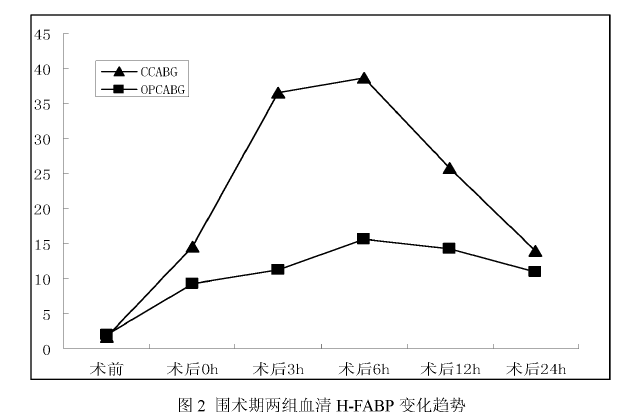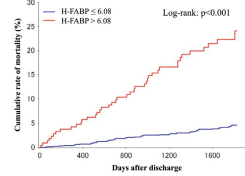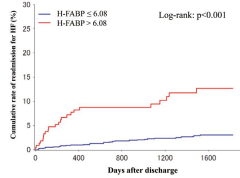Release date:2022-09-16
Cardiac markers are laboratory diagnostic items commonly used to assess myocardial injury and diagnose myocardial infarction. Currently, high-sensitivity troponin is the most widely used and sensitive diagnostic item for early diagnosis of myocardial infarction in the early stage of acute chest pain. Multiple guidelines consider it the main indicator for early diagnosis. High-sensitivity troponin has high sensitivity and myocardial specificity for early diagnosis, a relatively long half-life, and is often used in combination with other cardiac markers. Heart-type fatty acid binding protein (H-FABP) is a new cardiac marker, and studies have shown that it has great value in the early diagnosis of acute coronary syndrome (ACS).


I. What is Heart-type Fatty Acid Binding Protein
Fatty acid binding proteins (FABPs) are a group of proteins responsible for transporting fatty acids and lipophilic substances into and out of cells. FABPs have various tissue-specific types, such as liver-type, intestinal-type, and heart-type. Among them, heart-type FABP is mainly found in the heart and has strong tissue specificity. When there is myocardial ischemia, heart-type FABP is rapidly released into the circulation. H-FABP levels in the blood can rise 2-4 hours after myocardial infarction, peak at 4-8 hours, and return to normal levels in about a day.

II. Clinical Application of Heart-type Fatty Acid Binding Protein
Early Diagnosis: H-FABP can increase as early as 2 hours after myocardial infarction, making it an excellent early diagnostic indicator. Its myocardial specificity is much higher than that of myoglobin, so a positive result suggests a higher accuracy of myocardial infarction.
Detection of Recurrent Infarction: After myocardial infarction, creatine kinase-MB (CK-MB) returns to normal levels after 5-10 days, while H-FABP returns to normal levels in about 1 day. When a recurrent infarction occurs, H-FABP increases again, making it easier to detect than CK-MB.
Observation of Vascular Recanalization: After thrombolytic therapy for acute myocardial infarction, the peak value of H-FABP occurs around 3 hours earlier, and the time to return to normal levels is also earlier, which can indicate the effectiveness of thrombolytic therapy.
Evaluation of Reperfusion Injury: After ischemia of tissue organs, reestablishment of blood supply may lead to ischemia-reperfusion injury, which may occur within 15-45 minutes of coronary artery ischemia. In coronary artery bypass grafting (CABG) under cardiopulmonary bypass (CPB), CPB and aortic occlusion inevitably cause myocardial ischemia-reperfusion injury, leading to dysfunction of myocardial cells. H-FABP can be used to assess the extent of reperfusion injury. The figure below shows the change in H-FABP levels before and after CABG with and without CPB, reflecting the situation of reperfusion injury caused by the two techniques.


Prognostic Assessment of ACS: Detecting H-FABP about 20 days after myocardial infarction and following up with patients, it was found that patients with high levels of H-FABP had a higher rate of recurrent hospitalization and death.
 |
 |
|
全因死亡 |
再入院 |
Myocardial infarction, as a common acute and critical illness in clinical practice, greatly threatens human health. Regular screening, early detection, and early treatment are effective measures for preventing and managing myocardial infarction, which can improve adverse events and reduce mortality. H-FABP is a very good cardiac marker and plays a very important role in the evaluation of myocardial infarction.
References:
[1]Wang JZ, Qian RZ. Pathophysiology [M]. People's Medical Publishing House, 2018.
[2]WS/T 462-2015, Detection and Clinical Application of Heart Markers in Coronary Artery Disease and Heart Failure [S].
[3]Fang JY. Study on the Changes of Serum H-FABP, IMA, and CTnI during Perioperative Period of Coronary Artery Bypass Grafting under Cardiopulmonary Bypass [D]. Hebei University, 2011.
[4] Matsumoto S, Nakatani D, Sakata Y, et al. Elevated Serum Heart-Type Fatty Acid-Binding Protein in the Convalescent Stage Predicts Long-Term Outcome in Patients Surviving Acute Myocardial Infarction[J]. Circulation Journal, 2012, 77(4).
[5]Ye XD, He Y, Wang S, et al. Heart-type fatty acid binding protein (H-FABP) as a biomarker for acute myocardial injury and long-term post-ischemic prognosis[J]. Acta Pharmacologica Sinica, 2018.


